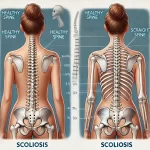Chemotherapy is a type of cancer treatment that uses drugs to kill cancer cells. The drugs can be administered orally or intravenously, and they work by targeting rapidly dividing cells, which includes cancer cells. Unfortunately, chemotherapy also damages healthy cells, leading to a range of side effects, such as nausea, vomiting, hair loss, and fatigue.
Radiation therapy is a type of cancer treatment that uses high-energy radiation to kill cancer cells. The radiation can be delivered externally, using a machine that directs the radiation at the cancerous area, or internally, using radioactive material placed near the cancerous area. Like chemotherapy, radiation therapy can also cause side effects, such as fatigue, skin irritation, and nausea.
The goal of chemotherapy and radiation therapy in bone marrow transplants is to destroy the patient’s unhealthy bone marrow so that it can be replaced with healthy bone marrow from a donor. The process is called conditioning, and it’s critical to the success of the transplant. The conditioning process serves two purposes: first, it kills cancer cells that may still be present in the patient’s body, and second, it prepares the patient’s body to receive the donor bone marrow.
Chemotherapy is typically administered first, followed by radiation therapy. The drugs used in chemotherapy are designed to destroy cancer cells throughout the body, while radiation therapy is focused on a specific area, such as the bones or lymph nodes. The combination of chemotherapy and radiation therapy is often called myeloablative conditioning because it destroys the patient’s bone marrow, leaving them vulnerable to infections and other complications.
After the conditioning process is complete, the patient receives the donor bone marrow. The bone marrow contains stem cells, which will develop into new blood cells, including white blood cells, red blood cells, and platelets. The new bone marrow will eventually begin to produce healthy blood cells, which is the goal of the transplant.
As mentioned earlier, chemotherapy and radiation therapy can cause a range of side effects, including nausea, vomiting, fatigue, and hair loss. In addition, myeloablative conditioning can cause more severe side effects, such as an increased risk of infection, bleeding, and organ damage.
Patients undergoing a bone marrow transplant will likely experience some or all of these side effects, and it’s important for them to be prepared for what’s to come. Patients should discuss their treatment plan with their doctor and ask questions about the potential side effects. They should also talk to other patients who have undergone the procedure to get a better understanding of what to expect.
Managing the side effects of chemotherapy and radiation therapy is critical to a patient’s well-being during the bone marrow transplant process. Here are some tips for managing common side effects:
Nausea and vomiting: Medications can help alleviate nausea and vomiting. Patients should talk to their doctor about the best options for them.
Fatigue: Patients may feel very tired during and after treatment. Rest is essential, and patients should take breaks when they need to.
Hair loss: Hair loss can be a difficult side effect for many patients
